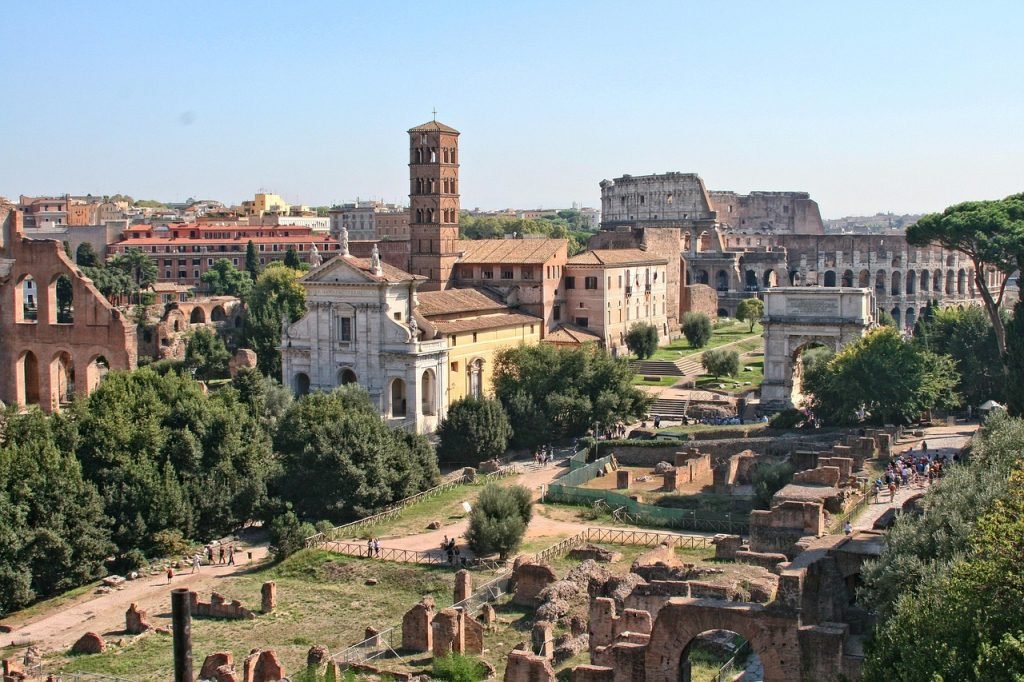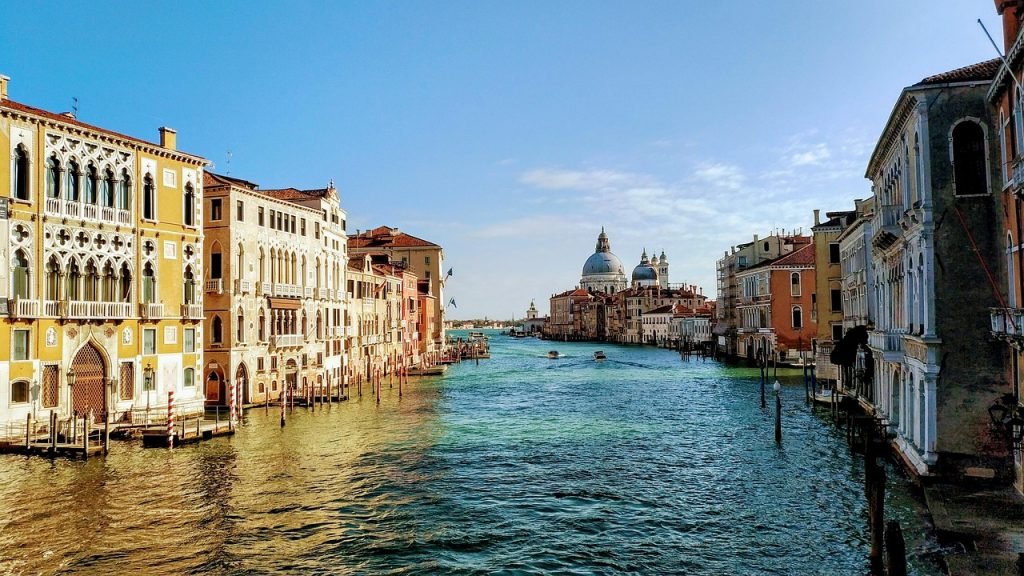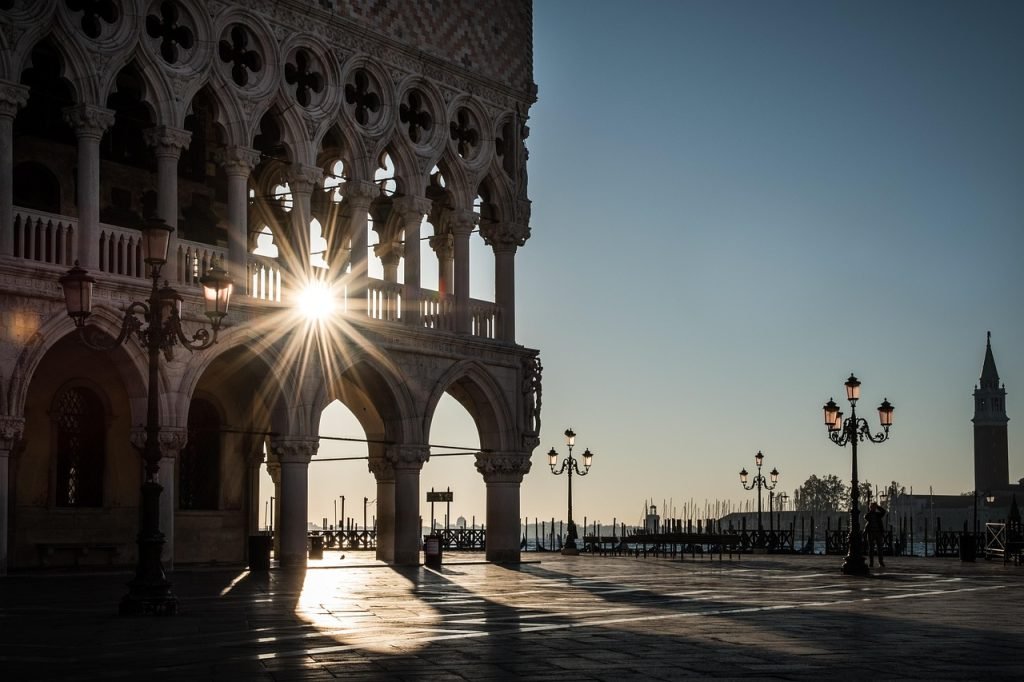Three days in Rome is like trying to read the Encyclopedia Britannica during a coffee break – completely impossible, utterly insufficient, but absolutely magical if you know exactly where to focus your limited time. After countless Roman escapes (any excuse will do – a friend’s birthday, sudden need for authentic carbonara, mysterious urge to throw coins in fountains), I’ve perfected the three-day formula that captures Rome’s essential soul without the tourist trap madness.
This isn’t just another itinerary – it’s a love letter to Roma written in walking routes, timed perfectly for how the city breathes throughout each day. By day three, you’ll understand why Romans aren’t arrogant when they call their city eternal – they’re just stating obvious facts.
Day 1: Imperial Rome – Walking Through 2,000 Years of Power
Morning: The Epic Ancient Walk (9:00 AM – 1:00 PM)
Start your Roman love affair at the Colosseum, but here’s my secret – appreciate it from outside first. No queues, no time pressure, just pure visual poetry as morning light hits those ancient arches. This is where 50,000 Romans once roared for entertainment, where the empire showed off its brutal magnificence.
Then begin the most cinematic walk in Rome: up Via dei Fori Imperiali with the Roman Forum spreading like an open history book on your right. Every step connects you to emperors, senators, and citizens who shaped Western civilization. The Forum isn’t just ruins – it’s democracy’s birthplace, where Caesar walked and Cicero spoke.
Continue to the dramatic Altare della Patria (yes, we call it the “wedding cake,” but it’s our magnificent wedding cake). Take the elevator to the top (€15) for panoramic views that encompass all of Rome’s seven hills. From here, climb to Campidoglio, where Michelangelo designed the perfect Renaissance piazza and Marcus Aurelius still rides his bronze horse.
Lunch Break: Find a trattoria for your first Roman pasta experience – carbonara, amatriciana, or cacio e pepe. No rushing, just savoring.
Afternoon: Villa Borghese Roman Style (2:30 PM – 6:00 PM)
From Piazza di Spagna (mandatory photo op on those baroque steps), enter Villa Borghese through Porta Pinciana. This isn’t just tourist park time – this is where Romans live and breathe when city intensity overwhelms.
Head straight to Pincio Terrace for views that make Romans fall in love with their city daily. St. Peter’s dome floats in the distance, terracotta rooftops stretch to the horizon, and you understand why sunset here has inspired poets for centuries.
Then discover the park’s hidden gem: the small lake (laghetto) where you can rent wooden boats just like Roman couples. It’s ridiculously romantic, costs almost nothing, and provides that peaceful Roman moment every soul needs.
Evening: Aperitivo near Spanish Steps, then dinner in a local trattoria. Let Rome’s evening energy wash over you – this is just day one, and she’s already working her magic.
Day 2: Vatican Wonders and Baroque Masterpieces
Early Morning: Vatican Museums and St. Peter’s (8:00 AM – 1:30 PM)
Book the earliest Vatican Museums entry possible – this is the greatest museum experience on earth, easily in my personal top 3 worldwide. Every corridor reveals masterpieces that would anchor entire national collections. The Raphael Rooms showcase Renaissance perfection, the Gallery of Maps creates cartographic poetry, and then…
The Sistine Chapel. Michelangelo’s ceiling doesn’t just impress – it redefines what human creativity can achieve. Standing beneath those frescoes, understanding that one man painted this lying on his back with paint dripping in his eyes, you witness genius touching the divine.
Don’t rush to leave the Vatican area. St. Peter’s Basilica (free entry) houses more artistic treasures per square meter than seems physically possible. Michelangelo’s Pietà, Bernini’s Baldachin, the dome climb (€10) for Roman panoramas – this is where Catholic power meets Renaissance artistry.
Afternoon: The Castel Sant’Angelo Walk (2:30 PM – 4:30 PM)
From St. Peter’s, walk along the Tiber toward Castel Sant’Angelo via the Bridge of Angels – Bernini’s masterpiece that turns a simple river crossing into spiritual journey. Each angel holds instruments of Christ’s Passion, creating outdoor gallery that leads to Hadrian’s transformed mausoleum.
Castel Sant’Angelo (€16) tells Rome’s entire story: imperial tomb, papal fortress, prison, palace. But the real treasure is the panoramic terrace where Rome spreads in all directions, with St. Peter’s dome dominating like a Renaissance crown.
Late Afternoon: Baroque Rome Walking Tour (5:00 PM – 8:00 PM)
Start at Piazza Navona, where Bernini’s Fountain of Four Rivers creates baroque theater in ancient stadium space. The piazza pulses with street artists, Romans taking evening strolls, and cafes perfect for people-watching over Aperol Spritzes.
Walk toward the Pantheon (always free, always miraculous) via narrow medieval streets that suddenly open to reveal this 2,000-year-old architectural impossibility. That dome still makes modern engineers weep with envy.
Stop at San Luigi dei Francesi church – tourists rush past, but inside wait three Caravaggio masterpieces that revolutionized painting forever. The drama, the light, the psychological intensity – this is where art learned to capture human souls.
End at Fontana di Trevi for evening magic when lights transform baroque sculpture into liquid poetry. Throw your coin (ensuring return to Rome), make your wish, and let the fountain’s power work its ancient magic.
Dinner: Trastevere for authentic Roman cuisine in the city’s most atmospheric neighborhood.
Day 3: Local Rome – Where Tourists Become Romans
Morning: Hidden Hill Adventures (9:00 AM – 1:00 PM)
Start at Palatine Hill (included with Colosseum ticket from Day 1) where emperors built palaces and Rome’s legendary founding occurred. The gardens offer peaceful archaeological wandering with Forum views that photographers dream about.
Walk down to Bocca della Verità (Mouth of Truth) at Santa Maria in Cosmedin church. Yes, it’s touristy, but this ancient lie detector carved in marble has tested Roman honesty for over 1,000 years. The legend says it bites off liars’ hands – I’ve never been brave enough to test it completely.
Then climb Aventine Hill, one of Rome’s original seven hills, for the famous keyhole view at Villa del Priorato di Malta. Peek through the Knights of Malta gate keyhole for a perfectly framed St. Peter’s dome view – it’s like looking through a green tunnel into Renaissance perfection.
Lunch: Testaccio neighborhood for authentic Roman market food and the city’s best traditional restaurants.
Afternoon: Trastevere Magic (2:00 PM – 6:00 PM)
Cross into Trastevere, Rome’s bohemian heart where real Romans live among cobblestone streets and ivy-covered buildings. This neighborhood maintains medieval charm while hosting contemporary Roman life – family trattorias serving recipes from nonna’s nonna, wine bars where locals debate politics over Frascati, street art mixing with ancient walls.
Visit Santa Maria in Trastevere basilica for medieval mosaics that rival Ravenna’s masterpieces, then wander streets where every corner reveals another hidden piazza, another neighborhood shrine, another Roman story.
Sunset: Gianicolo Hill (6:00 PM – 7:30 PM)
Climb Gianicolo Hill for Rome’s most romantic sunset panorama. This isn’t one of the original seven hills, but the views encompass the entire city – from Vatican to Colosseum, from Tiber curves to distant mountains. Romans bring wine and watch their city turn golden every evening.
Evening: Isola Tiberina (7:30 PM onwards)
End your Roman journey at Isola Tiberina, the ship-shaped island in the Tiber that connects Trastevere to the Jewish Quarter via two ancient bridges. This tiny island, home to a hospital for over 2,000 years, represents Rome’s continuous evolution – ancient Roman foundations supporting medieval towers housing contemporary healing.
Walk across Ponte Fabricio (62 BC, still standing) and Ponte Cestio, feeling the river’s eternal flow beneath your feet. Summer evenings bring outdoor bars and restaurants to the island, creating magical dining with water sounds and city lights reflecting in dark waters.
The Roman Walking Philosophy: Slow Down, Look Up, Get Lost
Distance reality: Each day involves 8-12 kilometers of walking, but Rome rewards every step with discoveries. Comfortable shoes aren’t optional – they’re survival equipment.
Timing wisdom: Romans eat late (lunch 1-3 PM, dinner 8-10 PM), siesta during afternoon heat, and come alive for evening passeggiata. Flow with this rhythm rather than fighting it.
Money matters: Budget €25-35 per person daily for attractions, plus €40-60 for excellent meals. Rome offers incredible value considering you’re walking through the world’s greatest outdoor museum.
What This Itinerary Really Gives You
Day 1 connects you to Imperial Rome’s power and grandeur, showing how ancient ambition shaped the Western world.
Day 2 reveals Vatican treasures and baroque genius, demonstrating how Renaissance artists transformed Roman spaces into spiritual theaters.
Last day introduces local Roman life, the neighborhoods and rhythms that make this ancient city feel vibrantly contemporary.
The Roman Secret: It’s Not About Checking Boxes
Rome isn’t a museum – it’s a living, breathing organism where 2,700 years of history layers create daily magic. Your three days won’t “complete” Rome (locals spend lifetimes discovering new corners), but they’ll give you something more precious: understanding why this city seduces every soul that walks her streets.
By day three, you’ll stop taking photos of every fountain and start sitting beside them, watching Roman life unfold. You’ll order coffee standing at bars like locals, navigate cobblestones with increasing confidence, and find yourself planning your return before you’ve even left.
Final Roman wisdom: Let the city seduce you slowly. Don’t rush between attractions like they’re items on a shopping list. Sit in piazzas, get lost in narrow streets, accept that Rome reveals herself on her own terms, in her own time.
When you throw that coin in Trevi Fountain on your final evening, when you promise to return to this impossible, eternal, endlessly seductive city – you’ll understand why Romans aren’t boasting when they say “Roma caput mundi” (Rome, capital of the world).
She simply is.
Arrivederci, Roma – until your inevitable return to the city that never lets lovers go.


